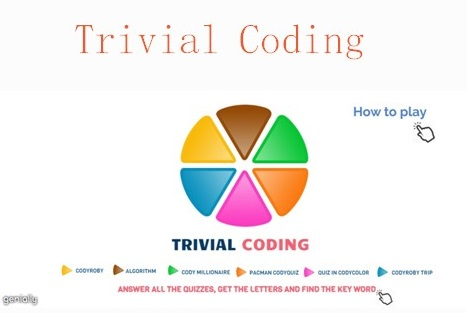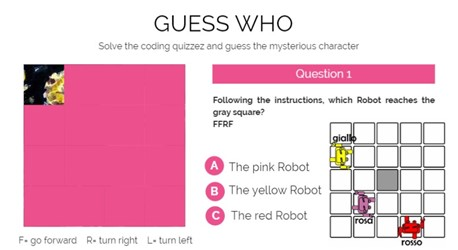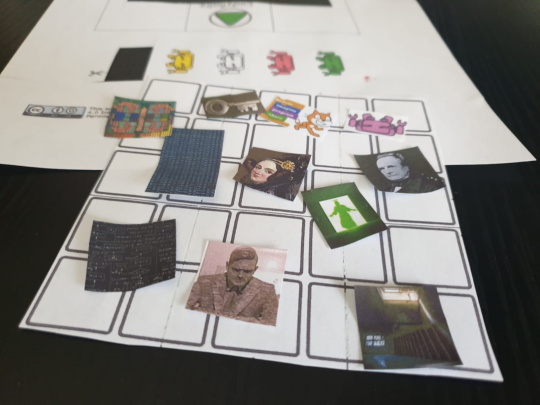Distance learning with coding
Publication date: June 29, 2020
by Stefania Altieri, EU Code Week Leading Teacher in Italy
Most of European schools were closed because of Covid-19. This meant teaching processes needed to change. Teachers tried to reach their students in every possible way to make the lockdown less difficult. They had to get involved, learn new things and try their best to use technological tools that they didn’t know before.
Because of the COVID-19 emergency, the opportunity arose to overturn the traditional set-up of classroom lessons and reshape the pedagogical impact. A new kind of
teaching methods based on cooperation had to be developed and improved. Distance learning, in some cases, paradoxically, brought teachers closer to their
pupils, both from an emotional and an educational point of view. To motivate the pupils and encourage their creativity, we created some coding games to be
played online with a computer or a smartphone.
The first game is based on the Trivial Pursuit format, a Canadian game in which the winner is determined by the ability of a player to answer general knowledge questions and specific quizzes for each individual subject. The version of Trivial Coding is based on coding and programming questions. All the quizzes are linked to QR codes or URLs.

The challenges are based on coding games like CodyRoby and CodyColor, Scratch, but also other games like Pacman and Who wants to be a Millionaire with a stronger
focus on algorithms.
At each stage of the race, students choose a slice of the cake to select a quiz topic and then try to solve the riddle. When they answer a queston of each category correctly, they win a letter for each round. If they find all the letters and put them in order, they find the keyword and win. The quiz game can be found here.
The second game is called Guess Who. In this game, students have to guess all the correct answers to find a mysterious character, hidden under the tiles. For each correct answer, a card disappears, giving a glimpse of the hidden image. The more correct answers the students give, the more of the character is revealed. Again the quizzes focus on coding with CodyRoby, CodyFeet, CodyColor, Scratch and the history of computer science and programming.
Here’s a link to the game.

The third game follows the escape room trend. In Escape Coding, a robot has lost his way and he is now in a strange place. By giving instructions to Cody, students can move around the maze and solve the puzzles. Cody will realize that he is inside a computer and he will find the way out while testing the player’s creativity. You can find the project here.

Playing is easy and fun, but also carrying out activities. The first two games were created together with the students suing Geanial.ly from ready-made models within the platform. The third game is based on Google forms, this time again with the contribution of the pupils. The games were proposed in e-Twinning projects as tasks for European partners. Many students could play and enjoy programming.
Passion and enthusiasm tied us together because our pupils needed a smile and words of encouragement. We felt, even more, the need to collaborate from afar and so we did.
